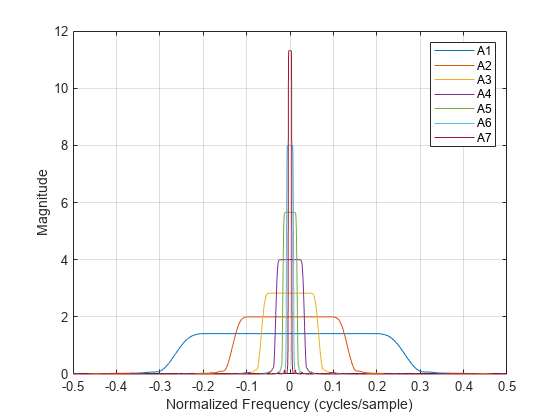freqz
DWT filter bank frequency responses
Description
[
returns the complex-valued frequency responses for the wavelet filters
psidft,f] = freqz(fb)psidft and the frequency vector f for
the discrete wavelet transform (DWT) filter bank fb.
Frequencies are in cycles/sample or in Hz if a sampling frequency is defined in
fb. The frequency responses are centered so that the zero
frequency is in the middle.
freqz( plots the one-sided magnitude
frequency responses for the wavelet filter bank, fb)fb. Magnitude
frequency responses are plotted for all wavelet bandpass filters and the coarsest
resolution scaling filter. The legend is interactive. To toggle the visibility of
the filter magnitude response, click the corresponding line in the legend.
Examples
Input Arguments
Output Arguments
Version History
Introduced in R2018a


